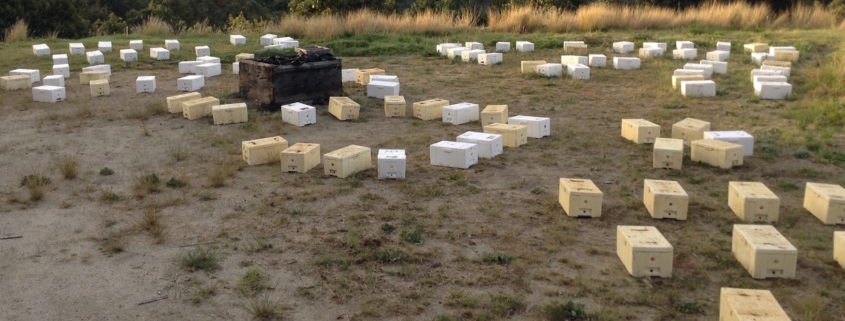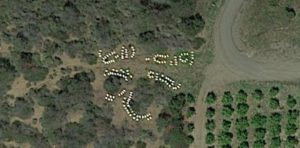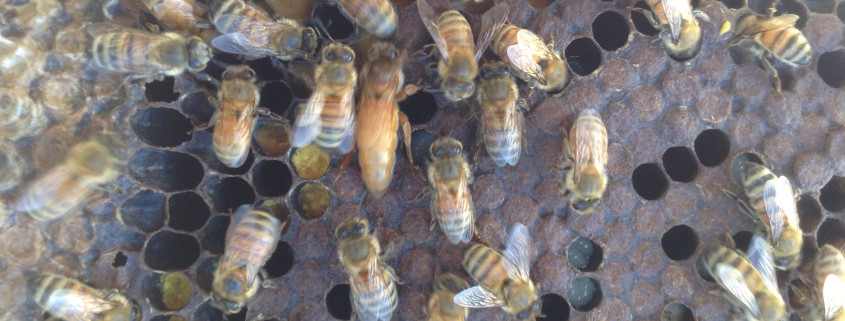The Queen Bee Mating Yard
The apiary pictured above is where a queen bee’s home resides, amidst hundreds of other similarly looking mating nucs; sort of like a monotonous development of tract homes that all look the same. Each queen lives inside her own mating nuc, where she begins her journey into the world with her emergence from a queen cell. A week or so later she takes flight from her mating nuc into the sky. If all goes well, after another week or so, she will begin to lay eggs and have the opportunity to prove herself as a quality mated queen bee for sale.
One of the challenges for a queen producer is properly setting up the layout of the mating nucs within the apiary. One would think that rows of mating nucs, neatly organized in perfect crisp lines, would be the most efficient use of space, and easiest for the beekeeper to manage. Unfortunately, while this straightforward organization might make perfect sense for the beekeeper, it is not ideal for queen bee rearing.
The problem with long, straight rows is that a queen bee returning from a mating flight needs to easily be able to return to the correct mating nuc when she arrives home from her flight. If all the nucs are lined up in neat rows, and there are otherwise no distinguishing landmarks to distinguish one part of a row from another, a returning queen can get confused. Which is the right box? A mated queen bee that returns to the wrong nuc box could possibly find disaster waiting, with another queen bee already established and ready to fight. This confusion of queens and foraging bees returning to the wrong home is called “drifting.” To the conscientious queen breeder, drifting should be avoided.
At Wildflower Meadows, to prevent drifting, we vary the patterns of the mating nucs in a queen bee mating yard (as do most all queen producers). Sometimes we arrange the mating nucs in curving rows, other times in circles, and other times in various geometric patterns. This makes it easier for returning queens to quickly get a “read” on the yard from the air, and hopefully find their way home, to the right home, each and every time.
Above is a satellite photo of one of our mating yards. If you were a queen returning home, could you find your way back?





